

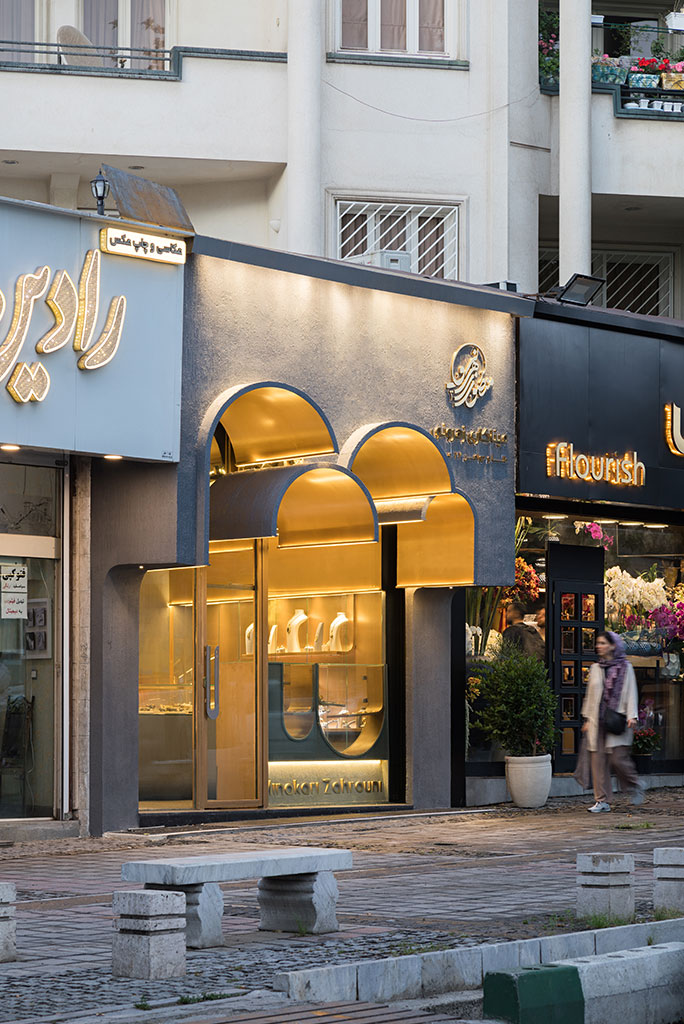





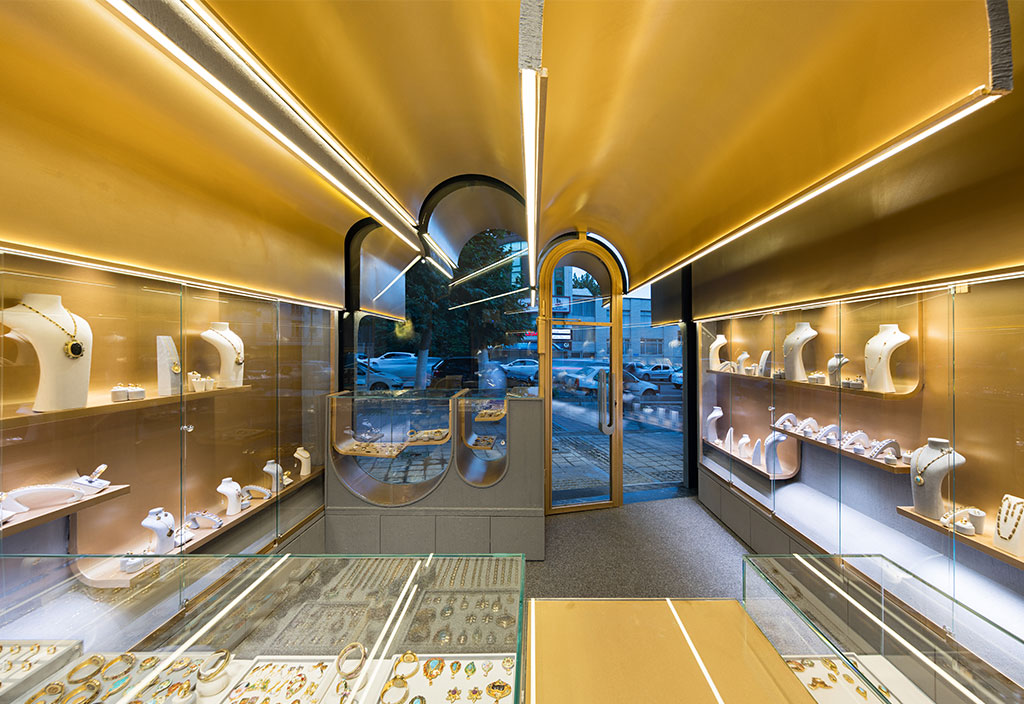
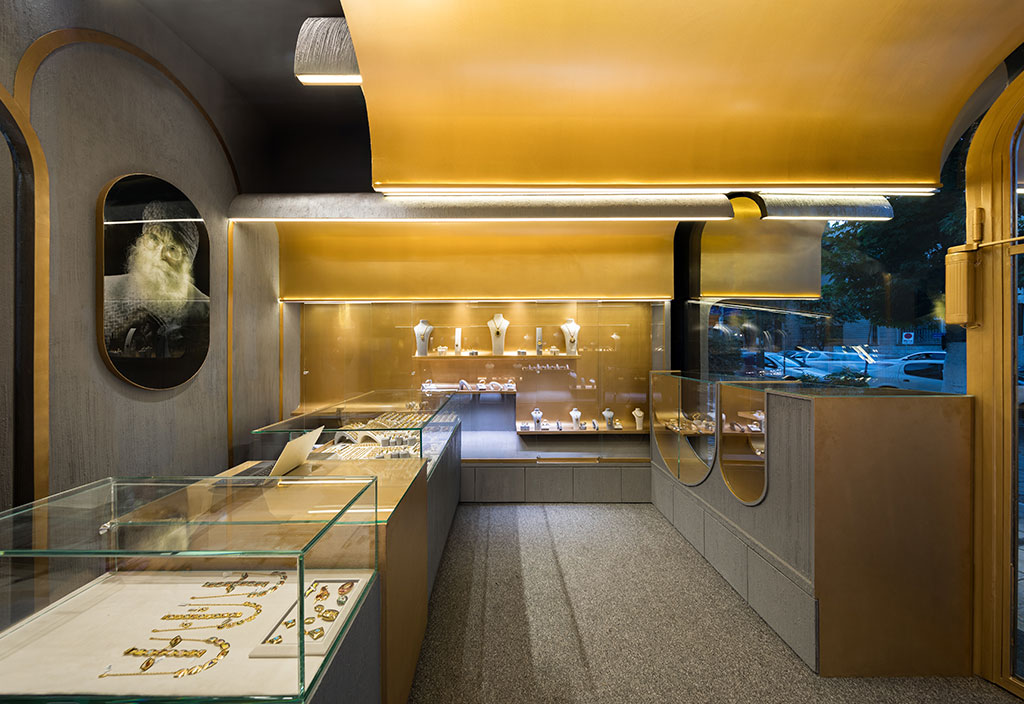
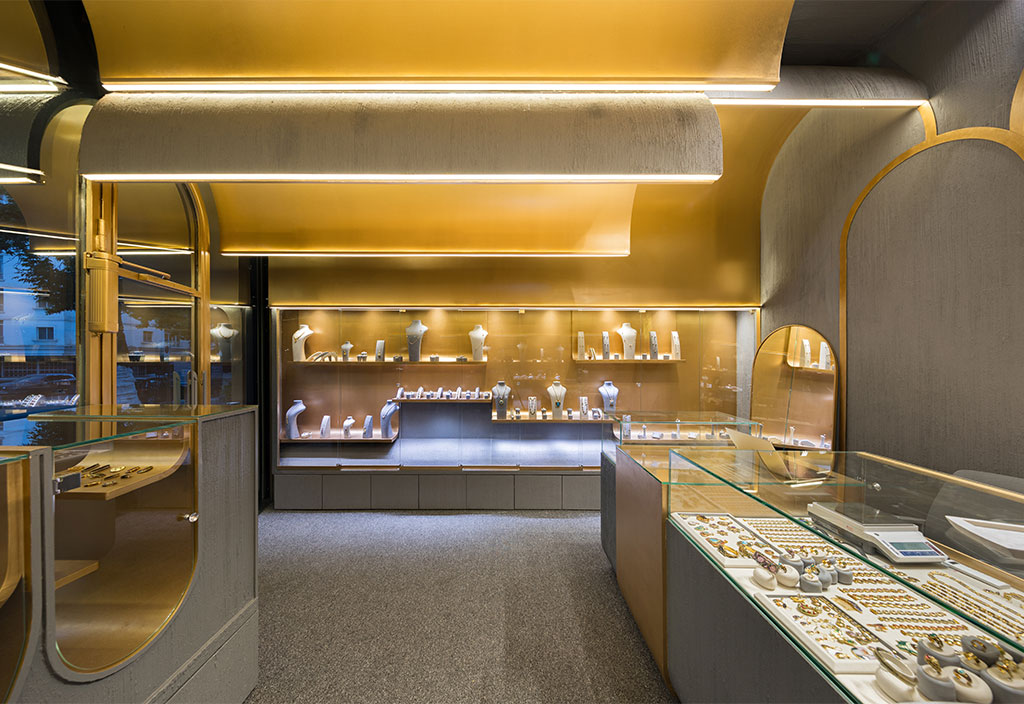
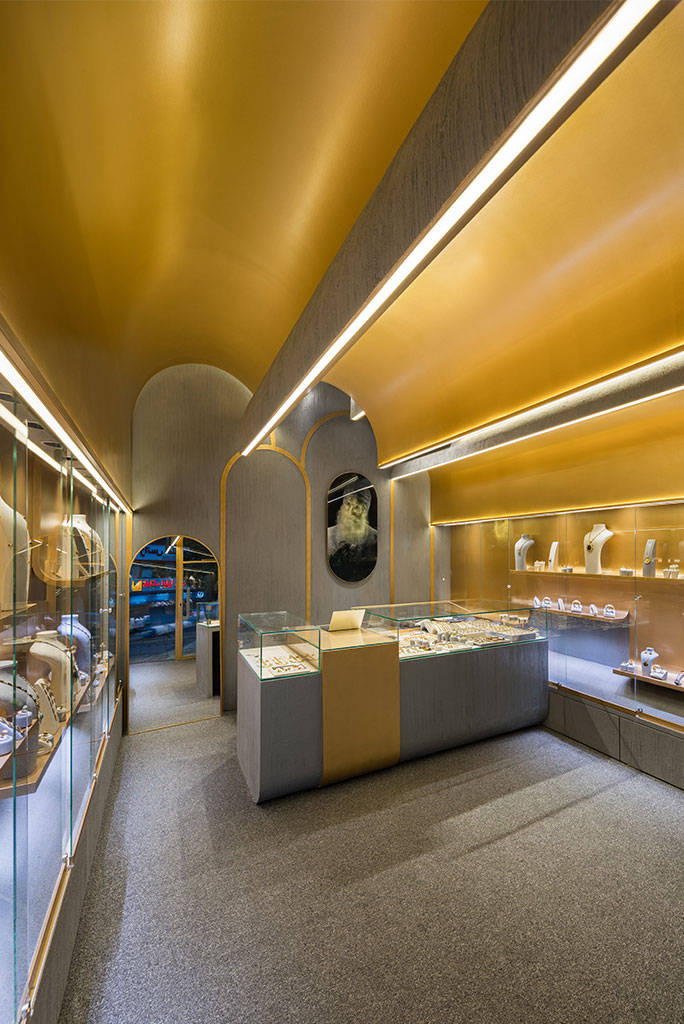
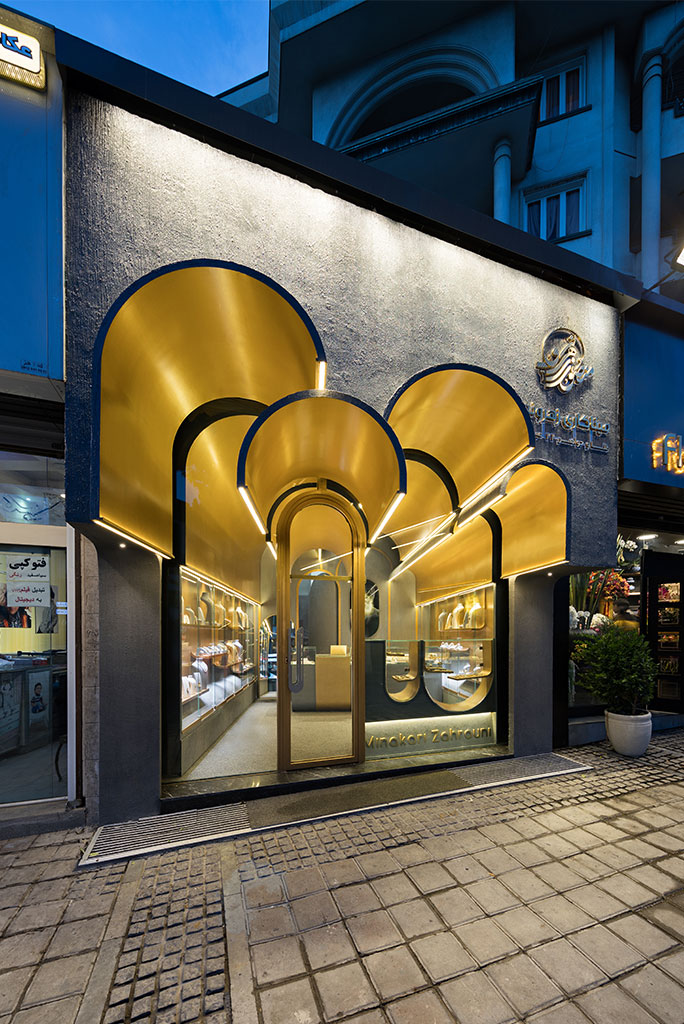

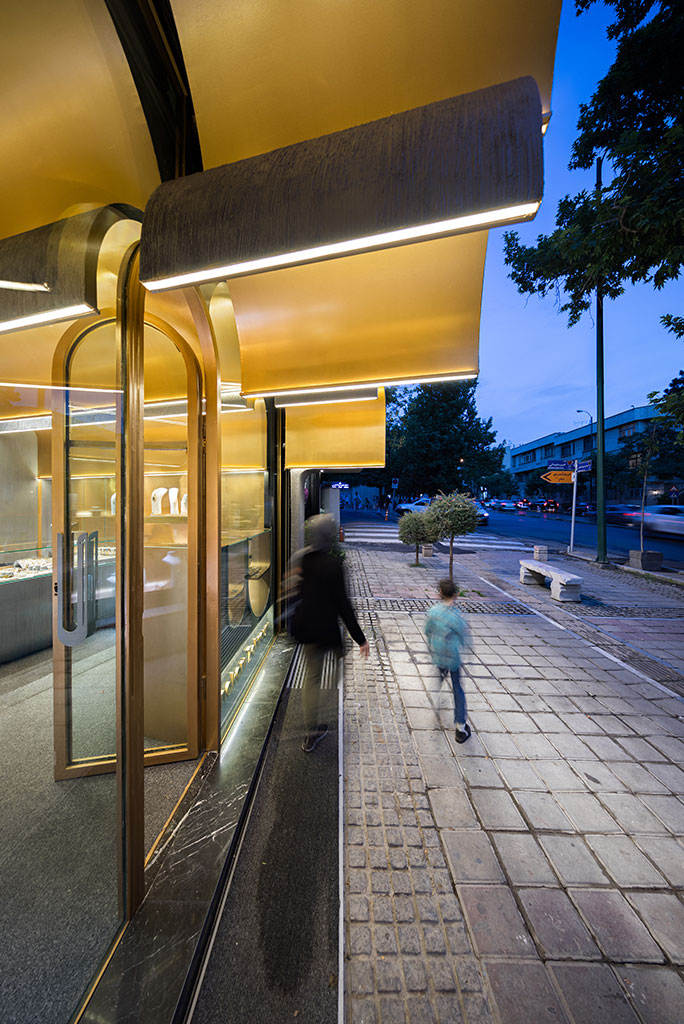
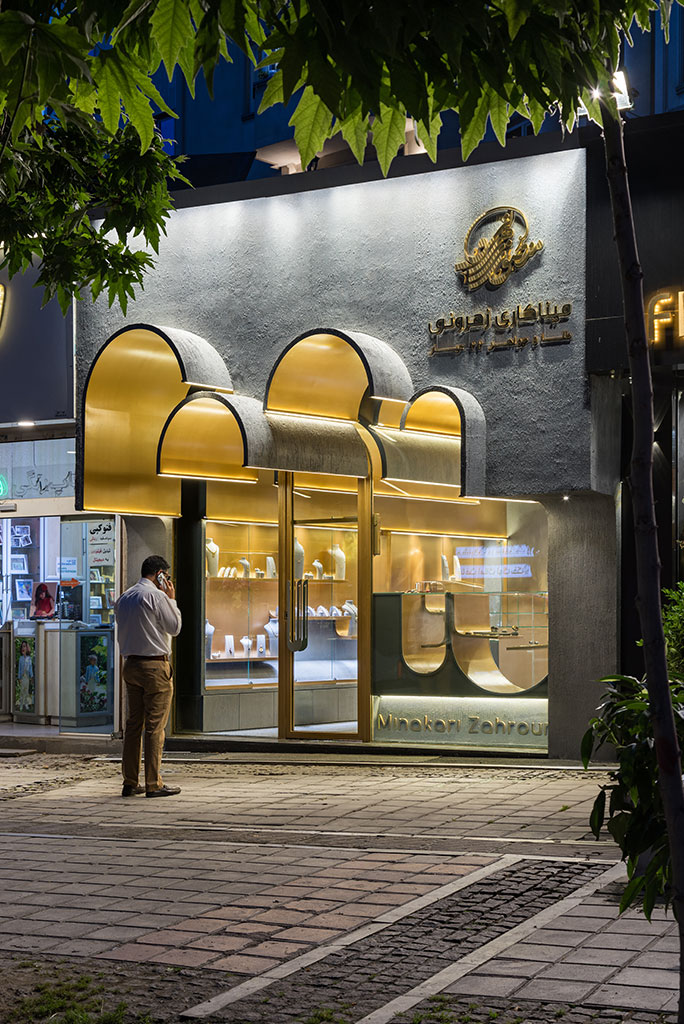
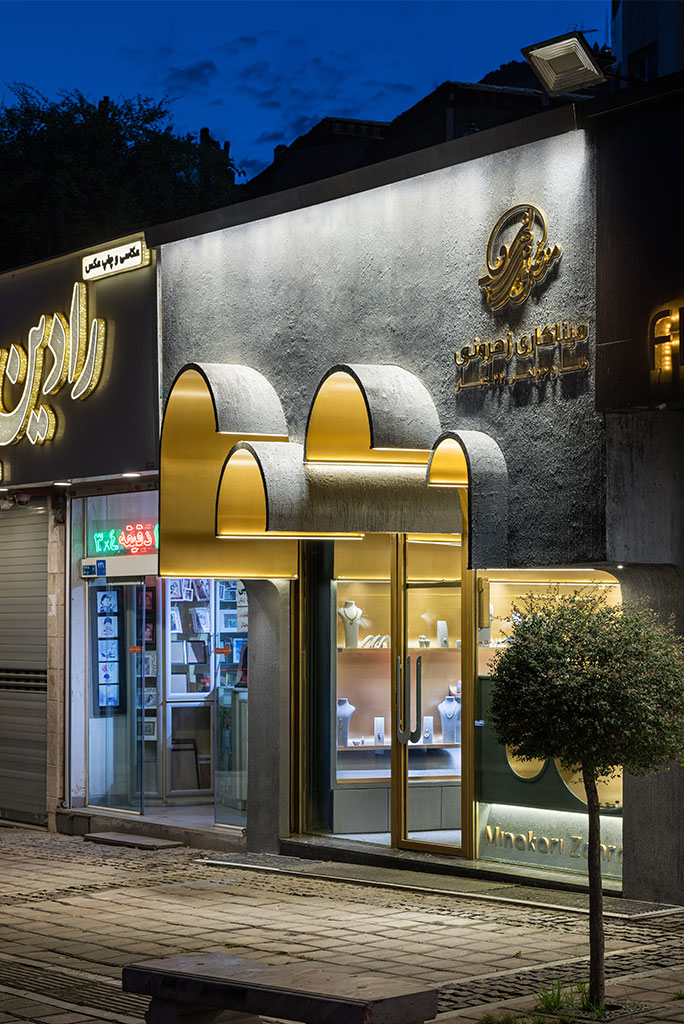
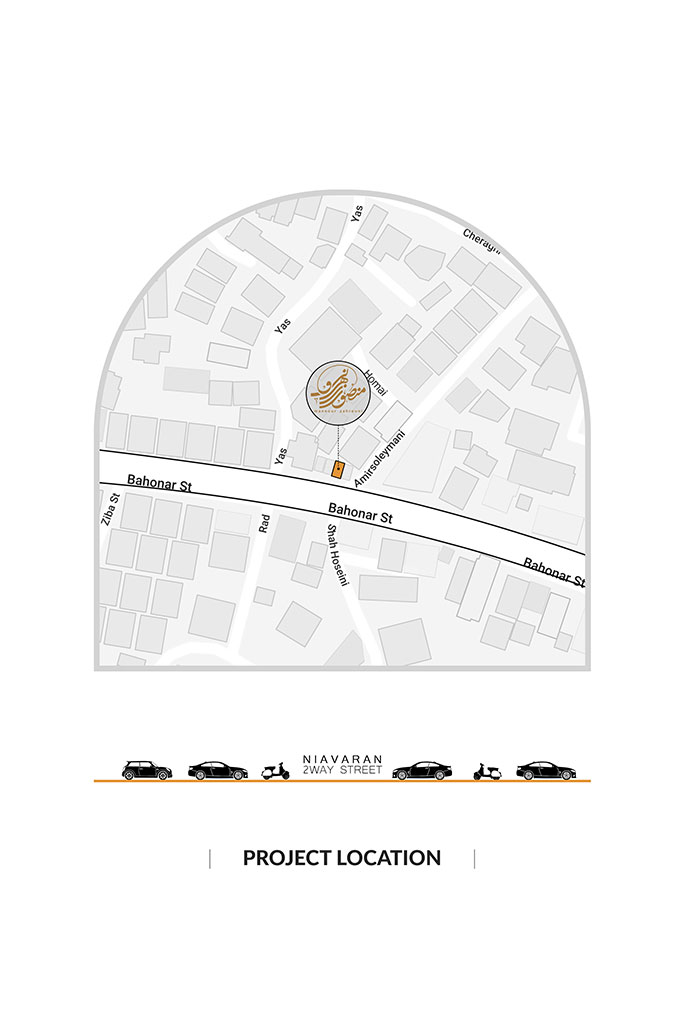
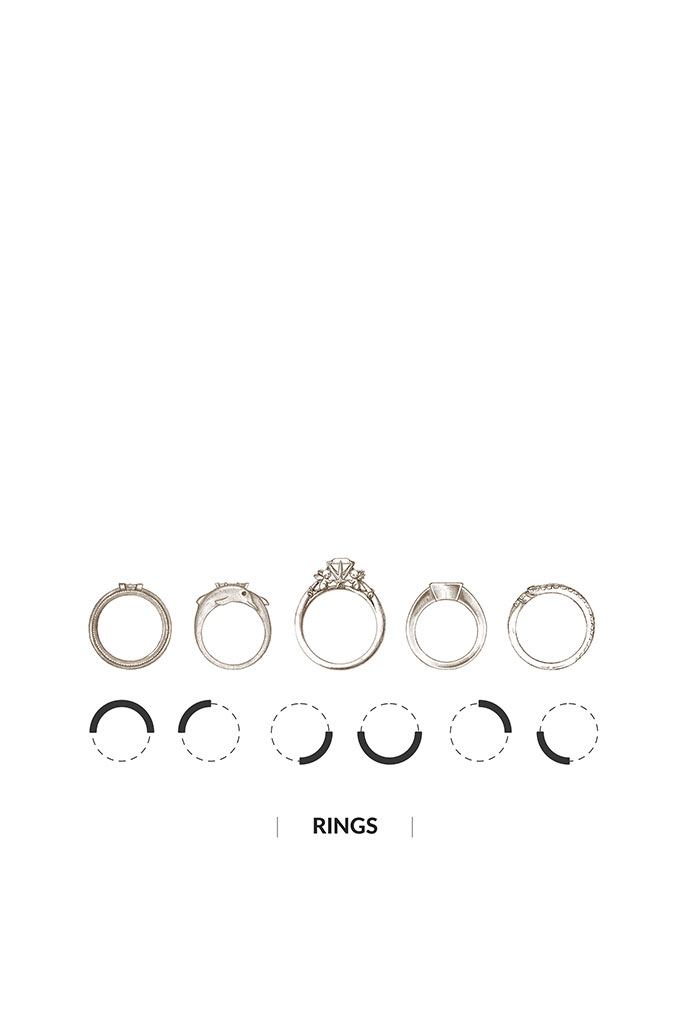

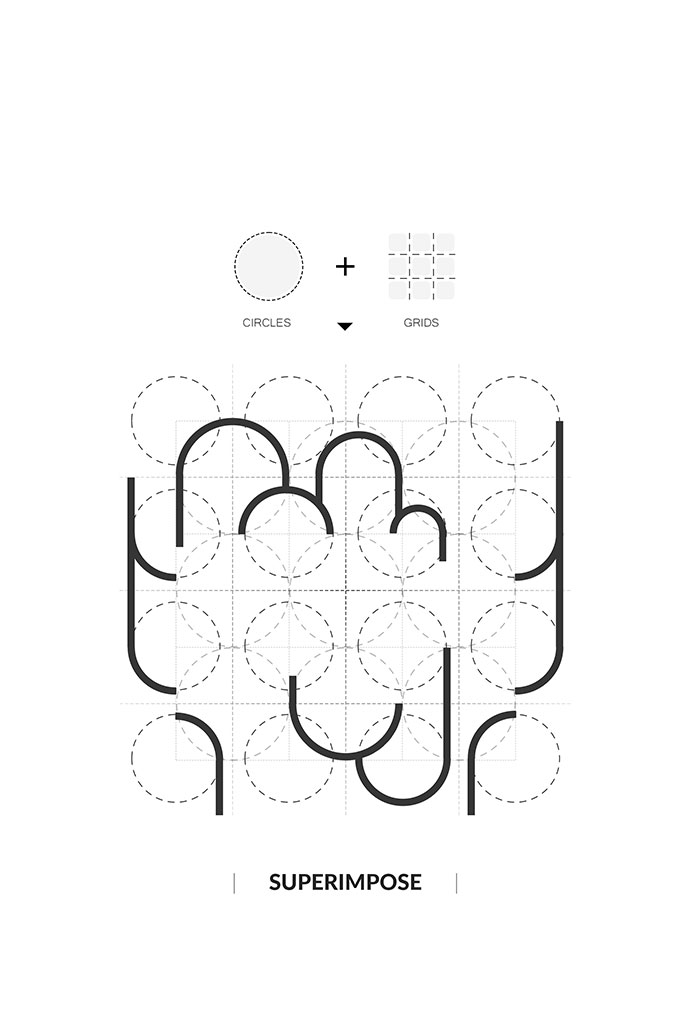
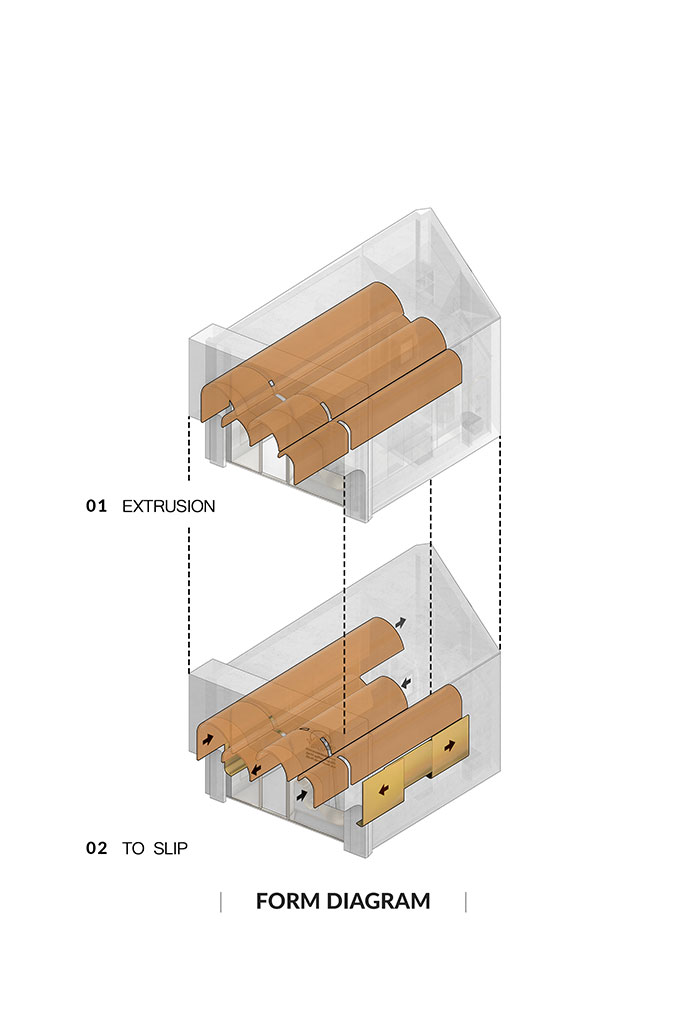


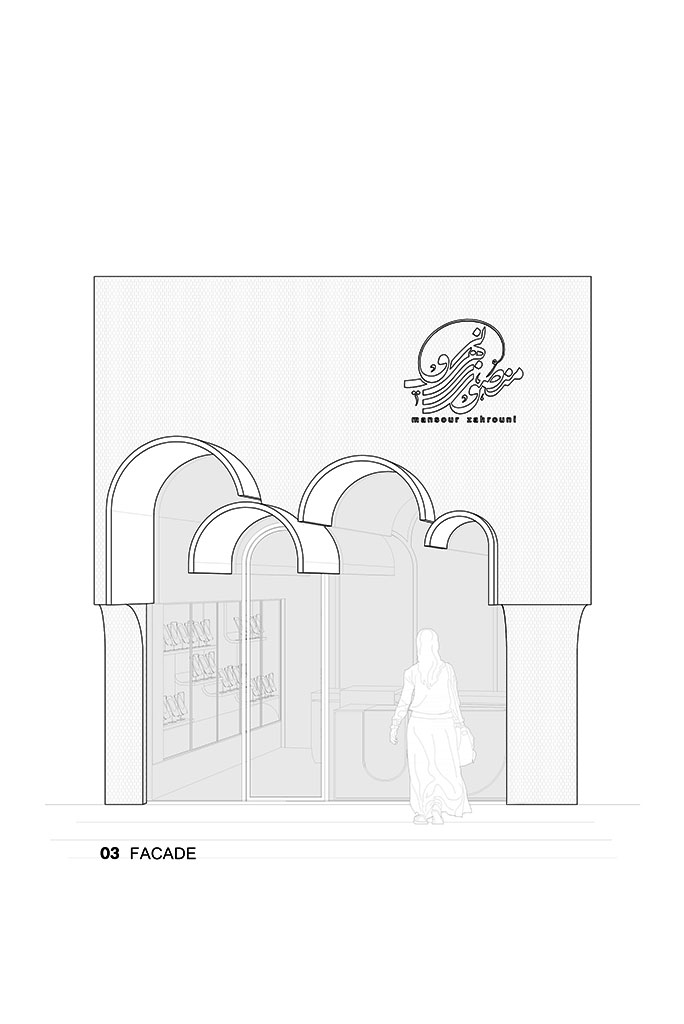
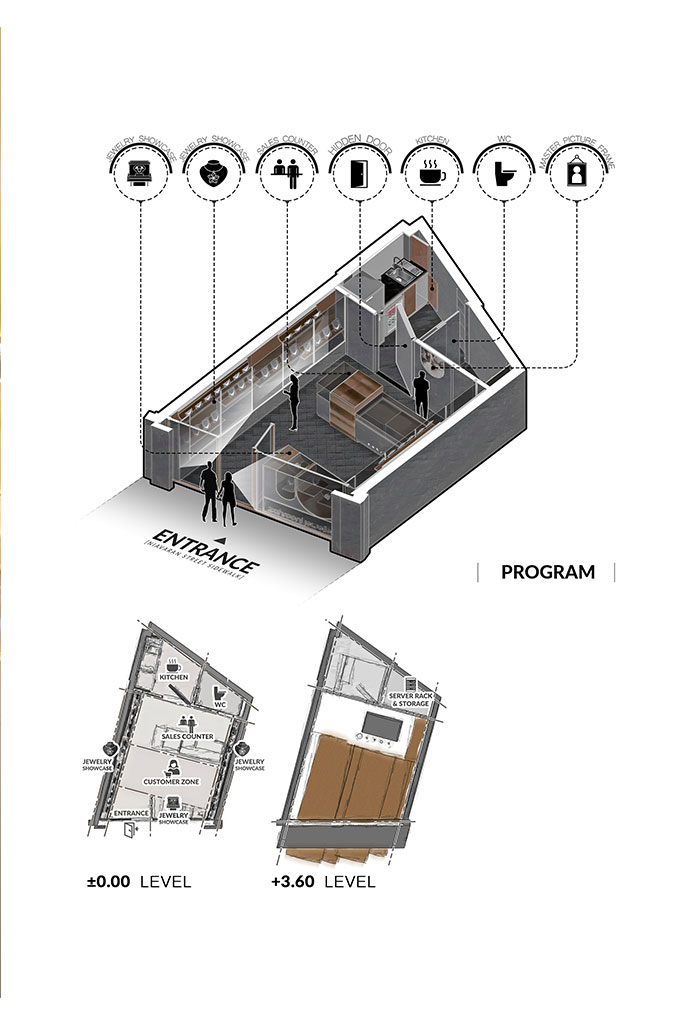
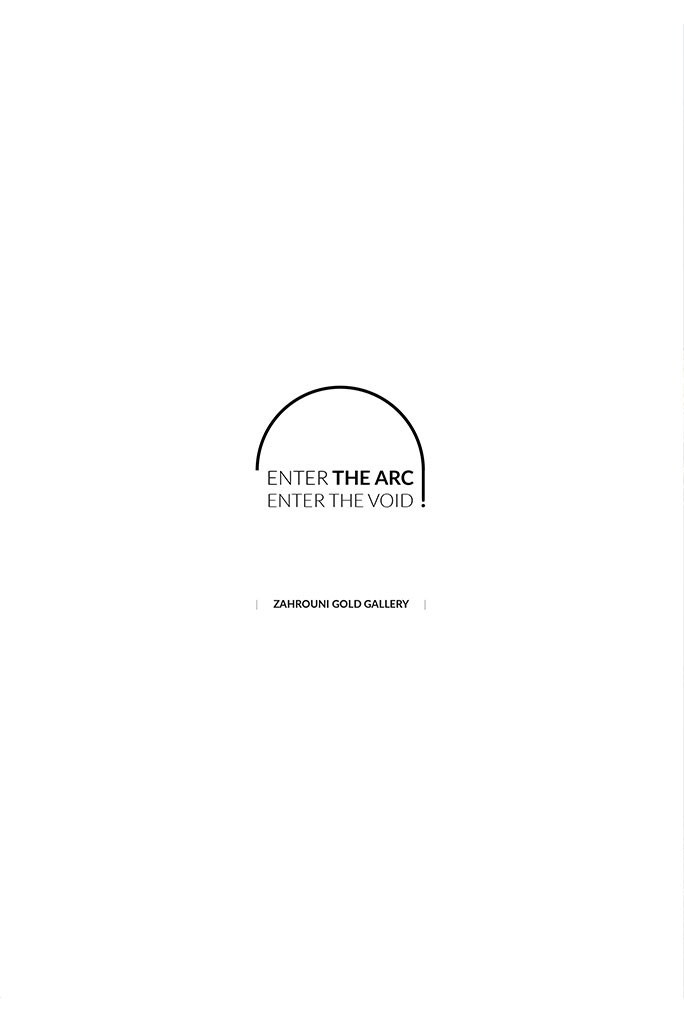



























ZAHROUNI GOLD GALLERY
2023 | Tehran | Niavaran st
Zahrouni Enameling's first branch in Tehran was a business unit on Niavaran Street that was planned for renovation and operation. The client's request was that the project while being an indicator, would show the age and credibility of the collection as one of the most reliable enameling authorities in Iran.
Zahrouni Art Group is a well-known brand among art lovers and those interested in Ahvaz handicrafts, especially Sobbi enameling. This group, which owes its prestige in the field of enameling and calligraphy to the art of Master Mansour Zahrouni, after the entry of young people familiar with Zahrouni to this profession, in addition to reviving the lost and faded techniques of their ancestors and the combination of modern science in Designing, molding and also using the experience of veteran masters of this art and profession has become a reliable brand in the jewelry industry, enameling, pen making and even pearling in the last ten years.
Project Location
The project was located in front of the Niavaran gas station and in a part of the street where the sidewalk was very wide. Therefore, the project had to establish a suitable dialogue with its audience at close, medium, and far scales and at different speeds. The design process started with its challenging parts. Where the gallery, despite being small, should stand out in its context and, at the same time, display its originality, geographical and cultural background in the context of the new environment. Another issue was raised and that was the location of the gallery in an area that historically has been bred with various political and social events and developments, as well as prominent buildings such as the Niavaran palace complex and cultural center and numerous buildings with post-modern architecture typical of the Pahlavi period.
Rings
Enameling is an art with a history of about five thousand years, which has been used to beautify various ornaments and dishes. This art is a combination of fire and earth, which is mixed with the art of painting and creates beautiful patterns. According to some experts, after matching Byzantine enamels with Iranian works, this art was formed in Iran and then went to other countries. Gold and silver are the only metals that do not oxidize when combined with enamel, so they make it possible to implement the design with details and with the most complete similarity on enamel. Mulla Khezr traveled to the city of "Van", which was the place of Armenians, to exchange enameling techniques and search for new goldsmithing techniques around the solar year 1228 (1850 AD). The city of "Van" was world famous in the industry of goldsmithing, painting, and enameling, specific to Armenians and other minorities. Mulla Khezr exchanged ideas with goldsmiths and veteran Armenian masters, and it was there that he made a huge change in the secrets of the profession and the formula for making black enamel (Sobbi enamel). During the three years he was working in the city of "Van", he improved his goldsmithing, enameling, and penmanship principles to a turning point in performing different operations for the implementation of traditional, cultural, and religious motifs on silver or gold sheets. He, who was enchanted by the amazing art and mastery of Armenian and Jewish artisans and artists, after exchanging opinions on this profession and returning to the city of Amara, he taught it to his children, and with his creativity and innovations, he and the Zahrouni family became famous in this profession and art. In 1310 (1932 A.D.), they exhibited their handmade works at the Paris Art Exhibition and aroused the admiration and admiration of European visitors.
As we progressed, the design strategy led us toward making the project iconic. The architecture of the Pahlavi period paid special attention to the art of the pre-Islamic period in the post-modern attitude. So, in the first step, we tried to use a module that is the common denominator of the product design language and the architecture of the project site, so that the project can adopt a metaphorical and at the same time contemporary literature.
In the following, we tried to select the parts that provide the required functions such as entrance, showcase, lighting and display, and sales space for the project. The parts selected as extrusion split the body of the building and presented a dialectic of inside and outside, which was a metaphor for the inanimate body of matter and giving it soul by art.
Form Diagram
At this stage, we tried to achieve various qualities of the space by sliding the cylinders on top of each other, this issue, in addition to creating more adventure, created various possibilities for placing light and sound sources with different functions.
In the interior, first by dividing the space into three parts: display, sales and a separated support and services area. In the following, by extending the form from the outside to the inside, the project tried to present a single language in the outside and inside design literature while being inviting. Arches extended inward while expressing the visual identity, providing all the functional needs including lighting, air conditioning, and display.
In the support department, the storage, toilets, and kitchen were created in such a way that while being hidden from view, they could have full functional capabilities in minimal space which made a difference.
Separating the service department and hiding it from the view with a hidden door from the two sales and display departments was important because different functions should be responsive to the user of the space in a small space without disturbing and causing visual disturbances.
In the interweaving of the arches and the dialectic between the simplicity of the structure and the dynamism of the form, creating diverse perspectives from different directions is an attempt to make the project dialogue with the audience on foot and on horseback, depending on the distance.
Functional zoning and the use of volumetric capacity instead of surface capacity could create more productivity from the limited space of the gallery.
Type: Commercial (Gold Enamel Gallery)
Location: Niavaran, Bahnar St
Client: Mr. Mansour Zahroni
Design and Construction: Hasht Architects – Ghaffari Studio
Principal Architects: Shahab Ahmadi - Iman Hedayati - Mohammad Ghaffari
Design Team Manager: Niloufar Mohammadzadeh
Design team: Niloufar Mohammadzadeh, Ali Ahmadi, Mahsa Darchei, Amir Salar Ghomashi, Farnaz Agahi
Workshop Supervisor: Hossein Nazari
Electrical Facilities: Modular Pro Co
Mechanical Facilities: Hasht Architects
Graphics Design: Niloufar Mohammadzadeh, Ali Ahmadi
Photography: Mohammad Hassan Etefagh
Area: 32 square meters
Year: 2023
Status: Built